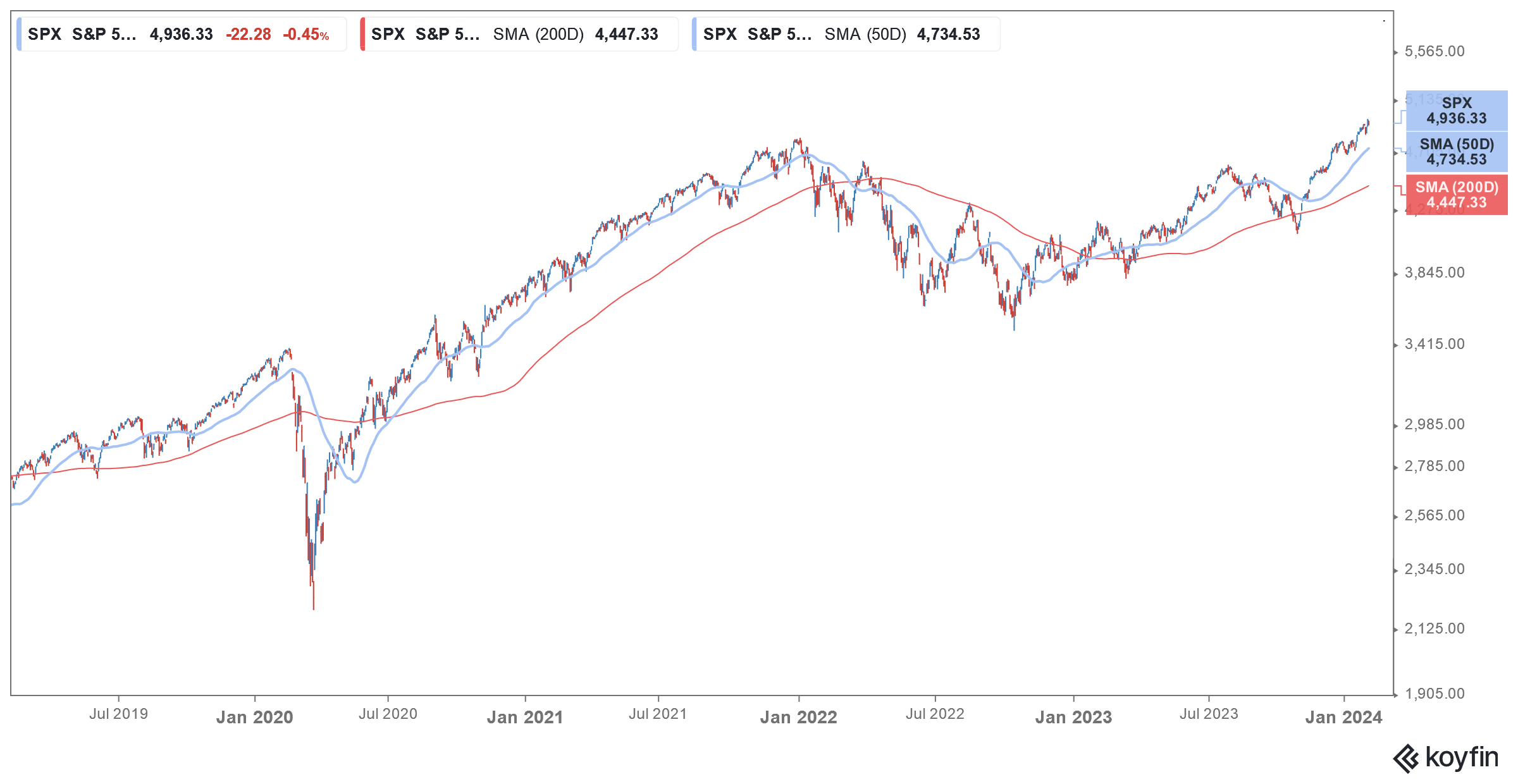Paul Tudor Jones and Jerome Powell Raise Alarm Over Rising US Debt
Please note that we are not authorised to provide any investment advice. The content on this page is for information purposes only.
The US debt pile has soared since the onset of the COVID-19 pandemic as the federal government opened its coffers to support the economy. US national debt surpassed $34 trillion at the end of 2023 while the debt-to-GDP ratio stood at around 122%.
While economists have long been calling for fiscal prudence to lower the debt-to-GDP ratio, Fed chair Jerome Powell and billionaire fund manager Paul Tudor Jones have joined the bandwagon.
According to Paul Tudor Jones, “We’ve got a 6%, 7% budget deficit. We’re fast-forwarding consumption like crazy.” He added, “It should be going gangbusters because we got an economy on steroids. It’s unsustainable.”
Paul Tudor Jones calls the US economy “unsustainable”
Meanwhile, the US debt pile only continues to swell and the fiscal deficit in the first half of the current fiscal year was half a trillion dollars.
Jones said, “The only question is does that manifest itself in the markets, or when does that manifest itself in the markets.”
The billionaire added, “It could be this year; it could be next year. Productivity may mask and it might be three or four years from now but clearly, clearly, we’re on a unsustainable path.”
Here it is worth noting that Jones is among the observers who believed that the US stock market rally in 2020 was unsustainable. However, markets defied naysayers and continued to rally in 2021 as well. While US shares retreated in 2022 they rebounded in 2023 even as most analysts were expecting them to deliver low single-digit returns during the year.
Jones on artificial intelligence
Jonas also talked about the need to channel artificial intelligence (AI) to benefit society. “There are larger issues that we’re going to be focusing on somewhere down the road. It’s going to be around, how do we stop and close the fiscal deficits that we have, as well as how do we use AI to benefit all Americans, not just the 5,000 or 10,000 extraordinarily brilliant people who are going to change our lives with it.”
Euphoria over AI has triggered a rally in US stocks and names like Nvidia have been among the immediate beneficiaries. Nvidia’s market cap soared over $1 trillion last year and the rally has continued unabated in 2024 also.
As for AI’s long-term impact, while old-timers like Warren Buffett and his (now deceased) deputy Charlie Munger are not too bullish, Goldman Sachs last year predicted that it could help boost productivity by 1.5% annually.
Jerome Powell raises alarm over US debt
Meanwhile, Powell also sounded alarm over the ever-rising US debt pile. “It’s probably time, or past time, to get back to an adult conversation among elected officials about getting the federal government back on a sustainable fiscal path,” said the Fed chair.
Powell added, “In the long run, the U.S. is on an unsustainable fiscal path. The U.S. federal government is on an unsustainable fiscal path. And that just means that the debt is growing faster than the economy. So, it is unsustainable. I don’t think that’s at all controversial. And I think we know that we have to get back on a sustainable fiscal path.”
During the “60 Minutes” interview, Powell said that future generations would suffer the consequences of the current spending spree.
Powell on rate cuts
During the same interview, Powell also talked about interest rates policy and said that its unlikely that the Fed would cut rates in March as markets seem to believe.
He said, “We want to see more evidence that inflation is moving sustainably down to 2%.” He added, “Our confidence is rising. We just want some more confidence before we take that very important step of beginning to cut interest rates.”
Meanwhile, Powell clarified that the Fed won’t wait for inflation to fall below 2% before it starts cutting rates.
Notably, in 2020, the US Central Bank changed its inflation-targeting approach and now targets an average inflation of 2% rather than chasing absolute numbers. The mandate gives Powell and company more leeway in deciding on monetary policy, unlike previously where its mandate was to keep inflation below 2% at all times.
Higher interest rates have also added to the US debt pile
The Fed has been on a rate-hiking spree since March 2022 and started with 25 basis points in March 2022 followed by 50 basis points in May. In the next four meetings of 2022, it raised rates by 75 basis points – a pace not seen in years – but toned down the hike to 50 basis points in December. The Fed raised rates four times in 2023 by 25 basis points each before it took a pause.
The December 2023 dot plot called for a 75-basis point rate cut in 2024 but markets believe the Fed would cut rates much steeply.
Notably, higher interest rates have also played a part in soaring US debt pile as the country’s interest payments on Treasury bonds have also risen amid the rise in bond yields.
China also faces a debt crisis
Meanwhile, the US is not the only major country facing a debt problem and China is also grappling with higher debt-to-GDP levels which is hampering its ability to come up with a fiscal stimulus to revive its sagging economy and stock markets.
Chinese stocks peaked in early 2021 and have since been sliding and the crash has wiped off $6 trillion in combined market cap of Hong Kong and Chinese shares. Also, Hong Kong recently lost its status as the world’s fourth biggest equity market to India whose stock markets are trading near record highs.
Markets have been concerned about Chinese shares after a flurry of economic data showed that the world’s second-largest economy continues to sag. The country’s real estate and banking sectors continue to be in turmoil and bankruptcies of real estate companies would only aggravate the bad debt in the banking sector.






